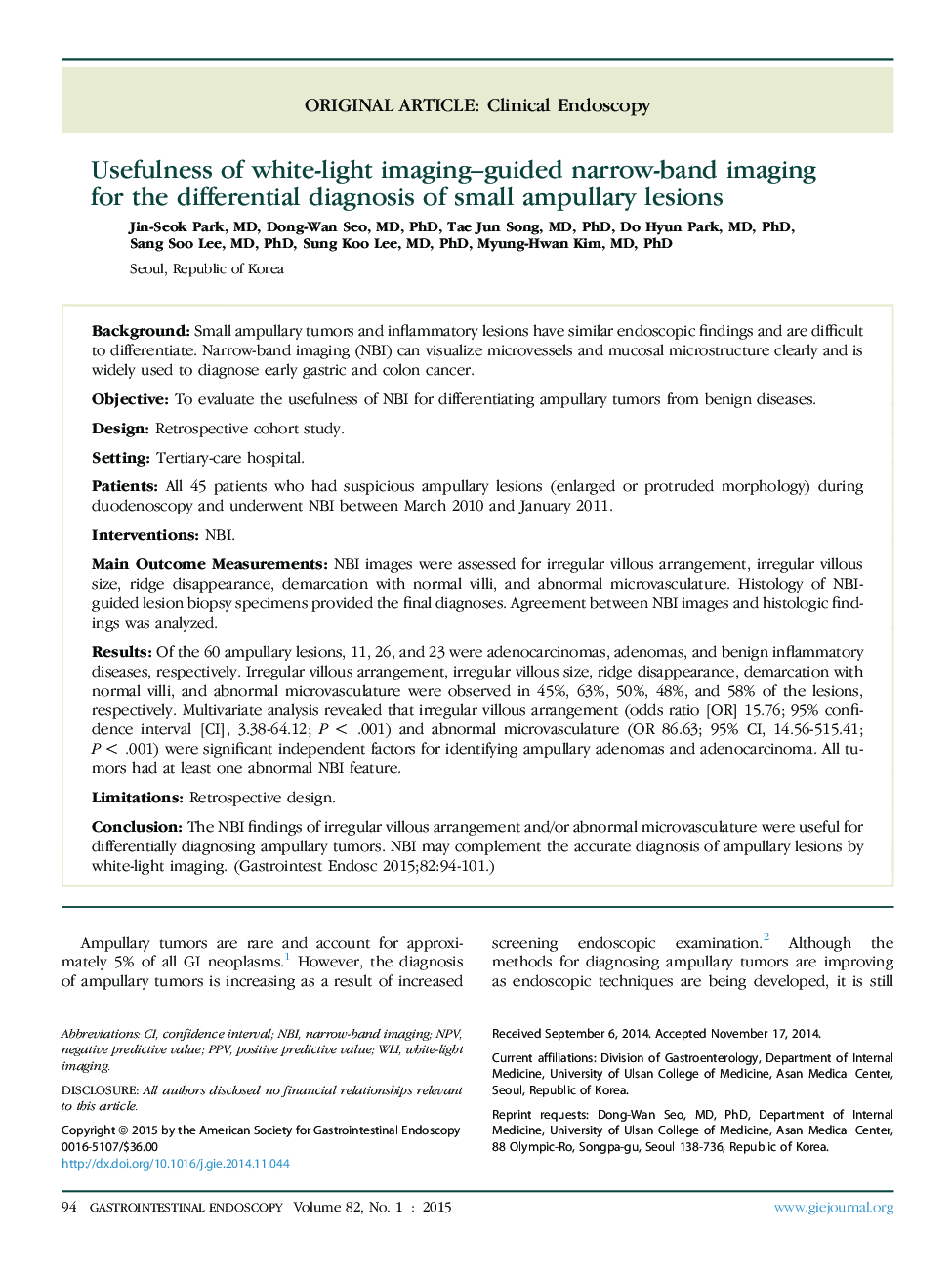| کد مقاله | کد نشریه | سال انتشار | مقاله انگلیسی | نسخه تمام متن |
|---|---|---|---|---|
| 6097647 | 1210291 | 2015 | 8 صفحه PDF | دانلود رایگان |
BackgroundSmall ampullary tumors and inflammatory lesions have similar endoscopic findings and are difficult to differentiate. Narrow-band imaging (NBI) can visualize microvessels and mucosal microstructure clearly and is widely used to diagnose early gastric and colon cancer.ObjectiveTo evaluate the usefulness of NBI for differentiating ampullary tumors from benign diseases.DesignRetrospective cohort study.SettingTertiary-care hospital.PatientsAll 45 patients who had suspicious ampullary lesions (enlarged or protruded morphology) during duodenoscopy and underwent NBI between March 2010 and January 2011.InterventionsNBI.Main Outcome MeasurementsNBI images were assessed for irregular villous arrangement, irregular villous size, ridge disappearance, demarcation with normal villi, and abnormal microvasculature. Histology of NBI-guided lesion biopsy specimens provided the final diagnoses. Agreement between NBI images and histologic findings was analyzed.ResultsOf the 60 ampullary lesions, 11, 26, and 23 were adenocarcinomas, adenomas, and benign inflammatory diseases, respectively. Irregular villous arrangement, irregular villous size, ridge disappearance, demarcation with normal villi, and abnormal microvasculature were observed in 45%, 63%, 50%, 48%, and 58% of the lesions, respectively. Multivariate analysis revealed that irregular villous arrangement (odds ratio [OR] 15.76; 95% confidence interval [CI], 3.38-64.12; P < .001) and abnormal microvasculature (OR 86.63; 95% CI, 14.56-515.41; P < .001) were significant independent factors for identifying ampullary adenomas and adenocarcinoma. All tumors had at least one abnormal NBI feature.LimitationsRetrospective design.ConclusionThe NBI findings of irregular villous arrangement and/or abnormal microvasculature were useful for differentially diagnosing ampullary tumors. NBI may complement the accurate diagnosis of ampullary lesions by white-light imaging.
Journal: Gastrointestinal Endoscopy - Volume 82, Issue 1, July 2015, Pages 94-101
